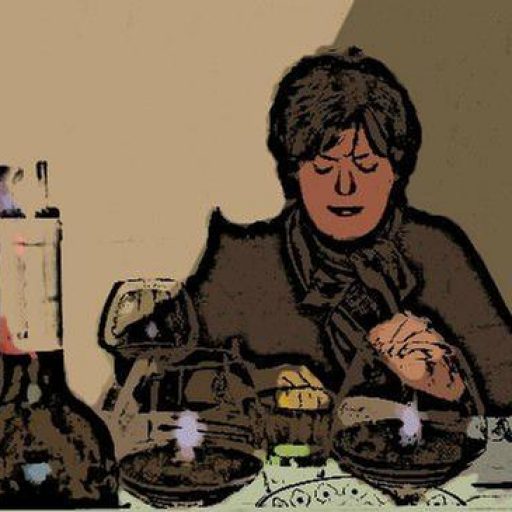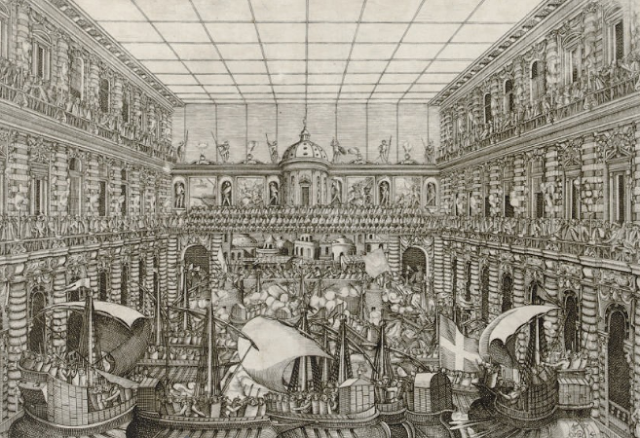One of the most prestigious open road races in the world is Italy’s Mille Miglia, (MEEL-leh MEEL-yah), a select group of classic and vintage sports cars racing through Italian cities and villages, across panoramic vistas for 1000 miles non-stop during the middle of June. Known as the “most beautiful race in the world” for 5 days classic cars like the Abarth, Alfa Romeo, Aston Martin, BMW, Bugatti, Citroen, Ferrari, Fiat, Lancia, Maserati, Mercedes, MG, Peugeot, Porsche and Renault compete in an open road, motorsport endurance race that evokes Italian passione at its most palpable.

The race begins in the Northern Italian town of Brescia where the 1000 Miglia has been in the town’s heart and soul since the race began in 1927. Divided into 5 stages over 5 days, the chosen route various each year. This year (6-11 to 6-15) the route passes through some of Italy’s most interesting towns, historical landscapes and regional cuisines starting in Brescia in northern Italy, down the eastern peninsula to Rome, then up the western side back to Brescia, circumnavigating the northern half of the country in a clockwise direction.
You don’t need to be a driving legend or professional driver to take part in the Mille Miglia. You do need the right car, which means a car built before December 31, 1957 and belonging to a car model that took part in at least one edition of the 1000 Miglia from 1927 to 1957. It is said that to win you need clever tactics and a bit of “buona fortuna” on your side. The race lends itself to a personal connection between the cars, drivers and spectators that line the race route. People of all ages gather side-by-side to cheer the cars and drivers, flags waving with the famous red arrow a striking symbol of the race.
I’m taking my Fiat 500 out this weekend for a drive in the countryside and although my car doesn’t have the prestige of a vintage Abarth we’ll enjoy an Italian inspired picnic that showcases the food from the towns and regions along the corso of Italy’s Mille Miglia, a race that is outside the natural, reminding of old fairy tales, stories of wizards with boots, of endless horizons , a crazy, draining race, without pit stops, through countryside and city, mountains and seashores, day and night pilots with nerves of steel. (Giuseppe Tonelli, Italian Journalist, 1927)
A Menu for a “Red Arrow” Roadside Picnic
Piada or Piadina Romagnola

An Italian flatbread filled with cured meats, cheese, and vegetables. Prosciutto, mortadella, buratta torn into bite-sized pieces, Italian spreads, arugula, drizzle of balsamic vinegar. The ingredients will make all the difference beginning with the bread which should be thin, pliable, and tender freshly griddled.
- 2 cups all purpose flour (plus extra for dusting)
- 1/2 teaspoon baking soda ( avoid baking powder which will make the dough closer to a pita which you want to avoid)
- 1 teaspoon salt (scant)
- 4 tablespoons Capezzana extra virgin olive oil (lard is the traditional fat used in piadina)
- 2 cups water
Combine dry ingredients in a mixing bowl. Stir olive oil into dry ingredients until well combined. Add water and mix with a fork until almost all of the flour has been incorporated. Use your hands to continue mixing until the dough forms a smooth ball. You can do this right in the bowl or turn the dough out onto a flat work surface. If the dough is too stiff, drizzle in about a tablespoon of water. If it’s too loose, add about a tablespoon of flour.
Form the dough into a log shape and cut into 4 or 5 pieces, depending on how large you’d like the piadina to be. Roll each piece into a smaller ball. Allow to rest for 20 minutes at room temperature under a damp tea towel or plastic wrap. Lightly dust a flat surface with flour. One at a time, press dough ball down with your hand and then use a rolling pin to roll dough into 1/4 inch 10 inch rounds.
Drizzle a small amount of olive oil in the griddle or cast iron pan and spread it around. Pan should be hot but not too hot. Transfer one piadina at a time into the hot pan. Cook for about one minute. Small bubbles will form on the surface of the flatbread. Turn the piadina over and cook for another minute. Cook each side for an additional 30 seconds or so, until the flatbread begins to brown. Remove from heat and repeat with remaining piadina. Cooked piadina can be stored in an airtight container for several days. Warm them in a hot pan to serve,
You could add on a seafood salad made with fresh tender poached prawns, calamari, scallops, celery, garlic, extra virgin olive oil, vinegar, salt, red pepper flakes, dill, fresh lemons and chopped parsley and a handful of pitted castelvetrano olives.
Another food that adapts itself to picnics, antipasti platters, or to enjoy as an ‘appertivo’ with a cocktail, negroni or Italian spritz is Ascoli Piceno/ Olive All’ Ascolana, deep fried green olives, filled with ground meat.

They are a specialty of the Marche and may be difficult to find in the States. Made with a filling of pork, beef, chicken, vegetables, garlic and cheese. The olives used are a special variety of soft, large green olives from Ascoli Piceno. You can use imported Castelveltrano olives but in this way they are not the same as the Ascolana olives that make this regional dish so special.







Leave a comment